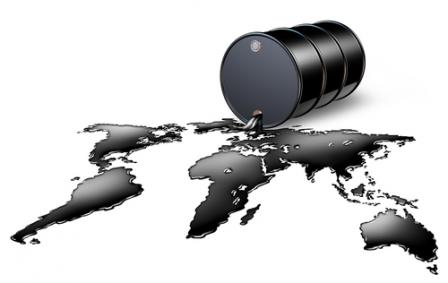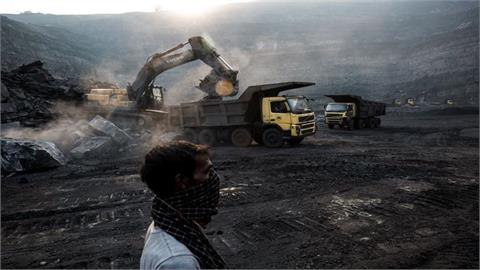by Daniel Yergin* Something had to give, and that something has proved to be the oil price. Its dramatic 20 per cent plunge reflects the reality of a new era in world oil, one defined by a resurgence of North American supply
Something had to give, and that something has proved to be the oil price. Its dramatic 20 per cent plunge reflects the reality of a new era in world oil, one defined by a resurgence of North American supply.
There is hardly a shortage of geopolitical risk these days. The Islamic State of Iraq and the Levant (Isis) has seized big swaths of territory. An undeclared war has broken out between Russia and Ukraine. There has been armed conflict between Israel and Hamas. Libya is in chaos. Uncertainty hangs over nuclear negotiations with Iran.
Yet the sum of these risks is trumped by the old-fashioned forces of supply and demand. While there may be a surplus of geopolitical risk in the world, there is an even greater surplus of oil.
Although some in Europe and the Middle East are sceptical, the revolution in American shale gas and tight oil is real. US crude oil output is up almost 80 per cent since 2008, supplying an extra 3.9m barrels a day – more than is produced by any of Opec’s 12 members except Saudi Arabia. Canadian oil sands have added another 1m b/d to North American supply over the same period. The names "Eagle Ford” in Texas and the "Bakken” in North Dakota have been lifted out of obscurity and, as big new production areas, are symbols of this breakthrough in technology.
This extra supply might have been accommodated were it not for the slowing world economy that has meant weaker oil demand in emerging markets, where virtually all of the future growth in consumption is expected to occur. We at IHS estimate that output in countries outside the Opec group of oil-exporting nations will increase by 1.7m b/d in 2014, compared with demand growth of just 0.9m b/d. Demand may end up even lowerby the end of the year.
Until recently, surging production in North America was offset by supply disruptions elsewhere, keeping the market in an uneasy balance. The flow of oil exports from Iran was impeded by international sanctions. Libya, Nigeria, and Sudan, among others, have also suffered supply disruptions, which helped keep the price high. But then Libya, despite being in a state of chaos, managed to quadruple its output over the past few months. Even more oil is looking for a market, at a time when the market itself is weakening.
Oil prices could rise yet again, stoked by new disruptions. They surged, after all, early this summer, when Isis emerged as a potential threat to production in the south of Iraq, where the bulk of the country’s production takes place. But that did not last. Once it became apparent that this infrastructure was secure, at least for now, the price eased.
How low will prices go? The US holds the key. Unlike conventional oilfields, the tight oil being produced there requires continuing investment in new wells to maintain production. Lower prices make such investment less attractive – but the effect may be smaller, and slower, than many people think. Some new fields become uneconomic if the oil price falls much below $90 – higher than it is today. But most of them are economic at $75 or well below that. Of course, if oil prices fall further, the impact will be greater.
Until recently, surging production in North America was offset by supply disruptions elsewhere, keeping the market in an uneasy balance
Only one country, Saudi Arabia, can cut its output by enough to balance the market. This summer it reduced production by 0.4m b/d in response tomarket conditions. Like everyone else, the Saudis are assessing how far the price will fall and how to respond. But they are unlikely to make large unilateral cuts that would allow Iraq, Iran or other countries to gain market share. With almost $800bn of foreign reserves – compared to an annual revenue loss of under $40bn at current prices – they have the staying power to endure the cycle. Further declines could lead Opec countries to try to cut production in concert, but there will be much arguing about at what level each country should cut back from. They may not even reach an agreement at their next meeting on November 27.
One country that benefits from the price collapse is the US. True, imports have fallen from 60 per cent of consumption to less than 30 per cent, and the unconventional oil and gas revolution has been a key factor in the US economic recovery, supporting well over 2m jobs. Still, in June the oil price stood at more than $110. If it fell to $80 and stayed there for a year, US motorists would have an extra $160bn in their pockets – equivalent to a sizeable tax cut, and it would not even have to clear Congress. Japan is entirely dependent on foreign oil, and China imports 60 per cent of what it uses. Both countries are big beneficiaries of falling prices.
Russia, on the other hand, is highly dependent on oil revenues, and is coping with slow economic growth and economic sanctions. More than 40 per cent of the Russian state budget comes from oil. Lower prices compound the country’s economic difficulties and may well be enough to push its economy into recession, if it is not already in one.
Some Russian commentators have taken to suggesting that the US and Saudi Arabia are orchestrating the price decline in order to weaken their country. These charges echo those bruited about after the oil price collapse of 1986 that contributed to the fall of the Soviet Union. Of course, this is untrue. To imagine the Obama administration conspiring with, of all people, independent oil producers in states such as Texas and North Dakota would require a great boggling of the mind. No, the answer to the oil price collapse is to be found in a weakening world economy and a new era of abundance in North American oil.
*The writer
is vice-chairman of IHS and author of ‘The Quest: Energy, Security, and the
Remaking of the Modern World’
("Financial Times”, October 17, 2014)




